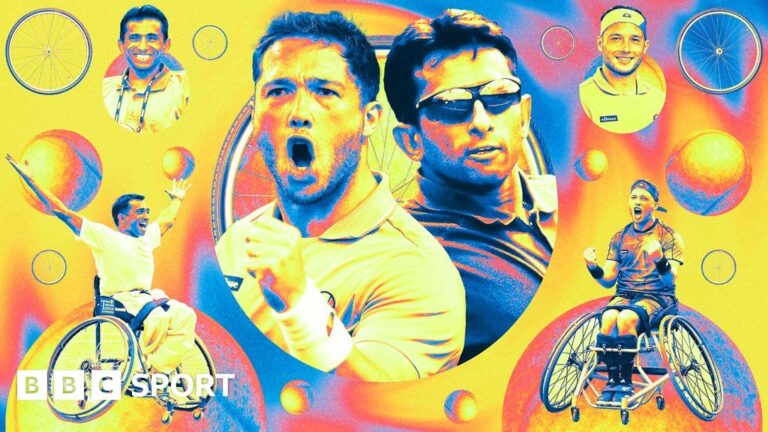Wheelchair Tennis Takes the Grand Slam Stage: An Inspiring Journey
In the world of tennis, a pivotal moment occurred in 2002 when the Australian Open Wheelchair Tennis Championships became the first official wheelchair competition to be integrated into a Grand Slam event. This historic move, spearheaded by the International Tennis Federation (ITF), marked a significant step forward in the sport’s development.
The Pioneering Journey of Jayant Mistry
Jayant Mistry, the first British player to win a wheelchair title at a Grand Slam, was a key figure in this watershed moment. Mistry, now 57, reflects on the early days of wheelchair tennis and the remarkable progress the sport has made, particularly in gaining recognition and exposure at the highest levels of the game.
“There was a bit of ‘wow, we’re at a Grand Slam’ but to be honest, it didn’t feel huge,” Mistry recalls of the 2002 Classic 8s event, the inaugural wheelchair competition at the Australian Open. “It didn’t feel huge because we’d already been doing exhibitions and everything else, and we weren’t really sure where this was actually going.”
The Rapid Ascent of Wheelchair Tennis
Where it was going was a rapid ascent, as within five years, the other three Grand Slams had also incorporated wheelchair competitions. The Australian Open once again paved the way in 2017, with the staging of a wheelchair final on a Grand Slam center court. By 2019, all four Grand Slams boasted quad competitions as well.
Mistry’s own journey in the sport began in 1986 when he witnessed a wheelchair tennis demonstration while playing wheelchair basketball at Stoke Mandeville. He soon became a four-time Paralympian, winning 68 titles and reaching the top 10 in singles or doubles for over 12 years.
The Evolving Financial Landscape
The financial landscape of the sport has undergone a remarkable transformation as well. When Mistry was first competing, prize money was almost non-existent, with the winner of a tournament earning a mere $500-$1,000. Today, the 2023 Wimbledon wheelchair doubles champions, Alfie Hewett and Gordon Reid, each received £13,000 in prize money.
The Impact of Grand Slam Integration
The exposure and integration of wheelchair tennis at the Grand Slams have played a pivotal role in elevating the sport’s profile and popularity. “It’s not only it being at the Grand Slams which gives it a sort of credibility, but the exposure of being part of the event too,” Mistry explains. “It adds a great deal towards the inclusive nature that wheelchair tennis brings.”
The journey of wheelchair tennis, from its humble beginnings to its current standing as an integral part of the Grand Slam circuit, is a testament to the sport’s resilience, determination, and the unwavering efforts of pioneers like Jayant Mistry. As the sport continues to grow and captivate audiences, the legacy of those early pioneers will undoubtedly inspire generations of wheelchair tennis players to come.
🔗 Source






